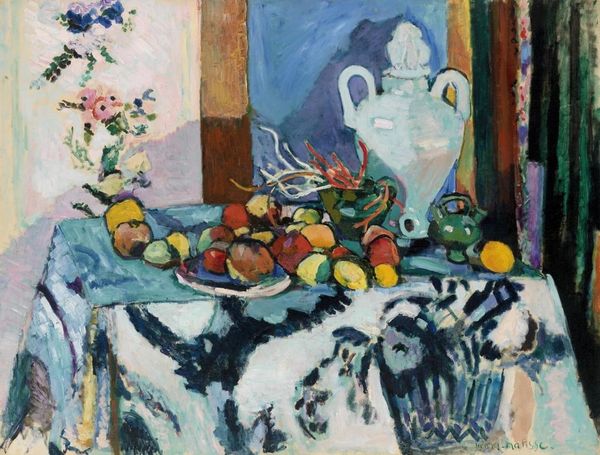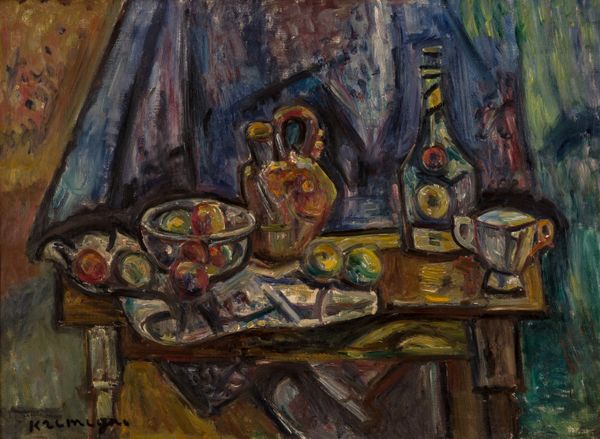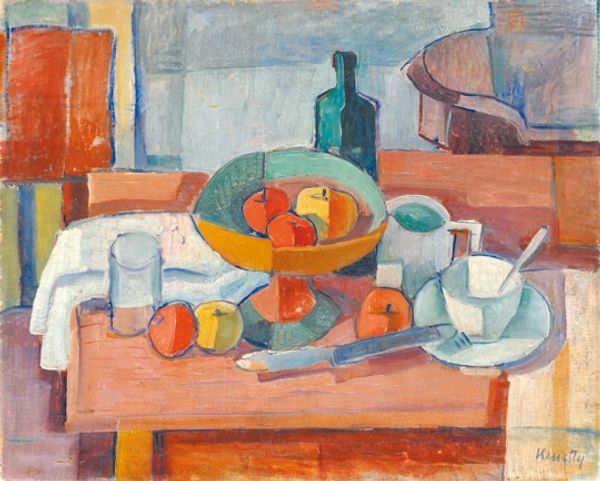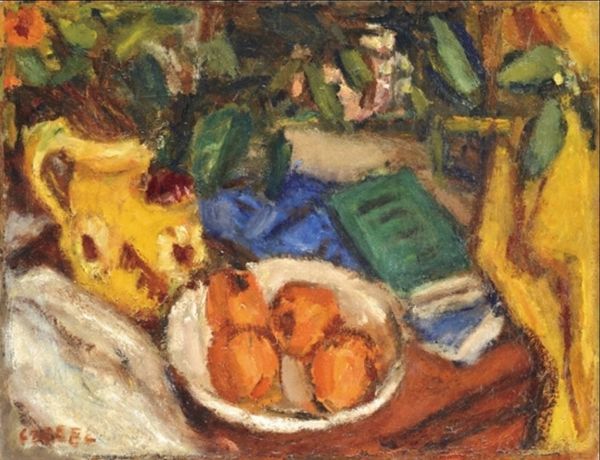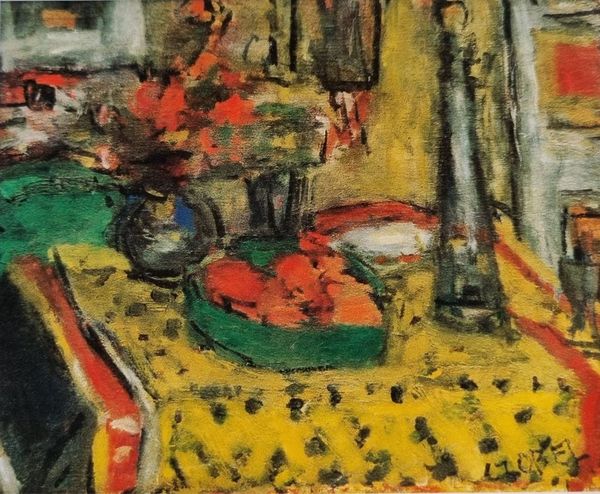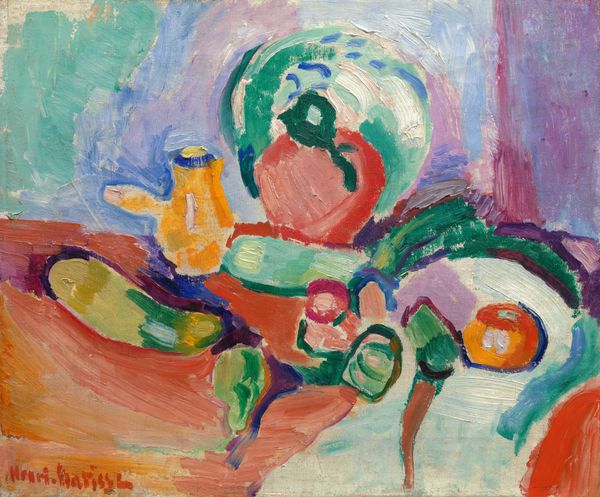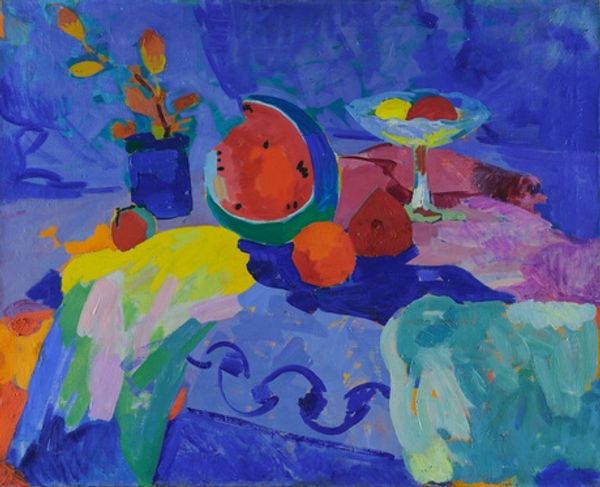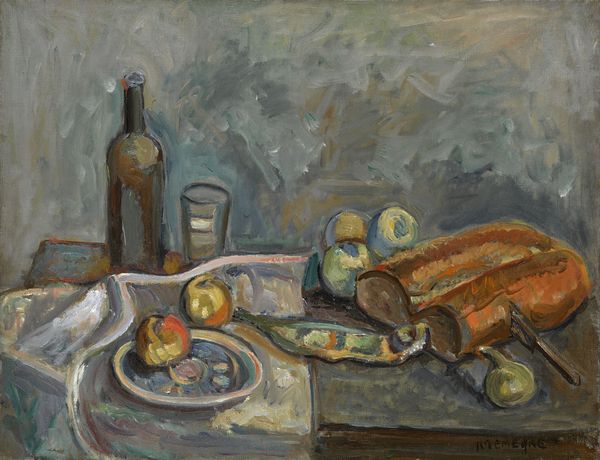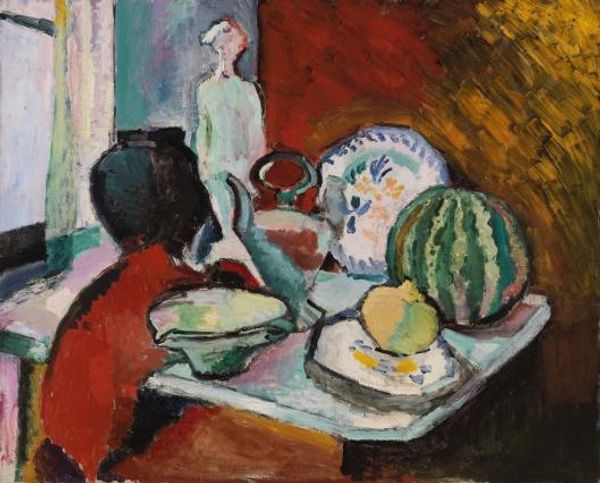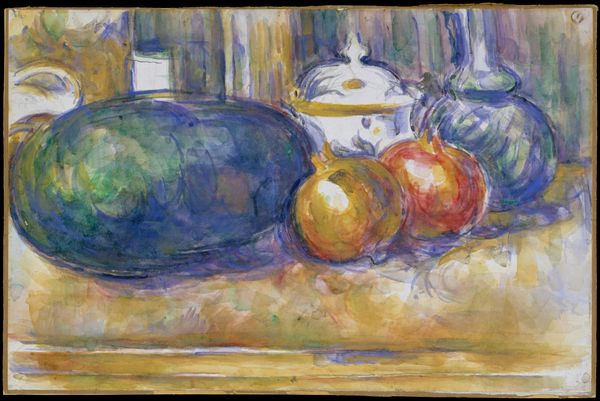
painting, oil-paint
#
fauvism
#
painting
#
oil-paint
#
painted
#
oil painting
#
modernism
Copyright: Public domain US
Editor: So, here we have Henri Matisse’s "Vase, Bottle and Fruit" painted in 1906, rendered in oil. The whole scene feels quite intimate and almost daring in its use of color. I’m immediately struck by how the patterned tablecloth almost competes with the objects on the table. What's your perspective on how Matisse pushes against convention here? Curator: I think you've hit on something essential. This painting, early in Matisse’s Fauvist period, reflects a shift in the function of art itself. Art academies of the time stressed naturalistic rendering. The vivid, almost clashing colors, along with the flattened perspective challenge that completely. In a society used to art as imitation, Matisse offers art as...expression. Do you see how that bold color frees the objects from their everyday associations? Editor: Definitely. It’s not just about seeing a vase; it’s about experiencing it. So, would you say this represents a shift in what society expected from art and artists? Curator: Absolutely. The public's reaction to paintings like this was often shock, even outrage. Museums exhibiting these pieces played a significant role in either legitimizing or marginalizing such radical approaches. Think about the critics, the collectors, and the very architecture of the galleries. Each contributed to how the public encountered and understood, or misunderstood, Fauvism. It's about questioning established tastes, really. Editor: That makes me think about how museum spaces are political spaces too, curating not just art but also ideas about what art *should* be. It's wild to consider how disruptive something as seemingly simple as color could be! Curator: Exactly. By displaying works like these, museums subtly argued for a broader, more inclusive understanding of beauty. Ultimately, I learned so much from this piece: understanding the cultural and social aspects adds richness to my art viewing. Editor: Agreed. Looking closely, you really start to appreciate how much power is embedded in institutions. I had never considered art's "function" so critically.
Comments
No comments
Be the first to comment and join the conversation on the ultimate creative platform.


